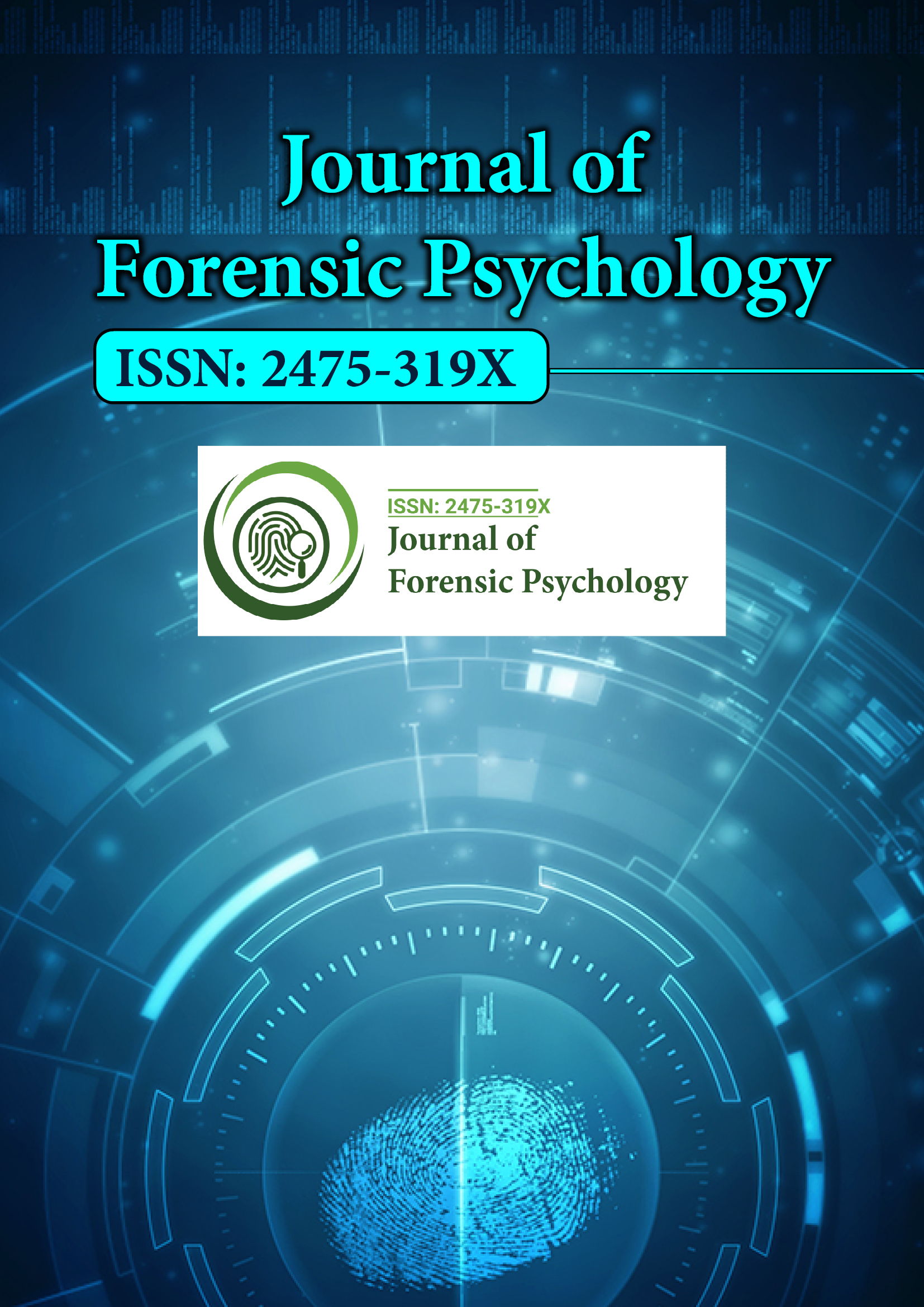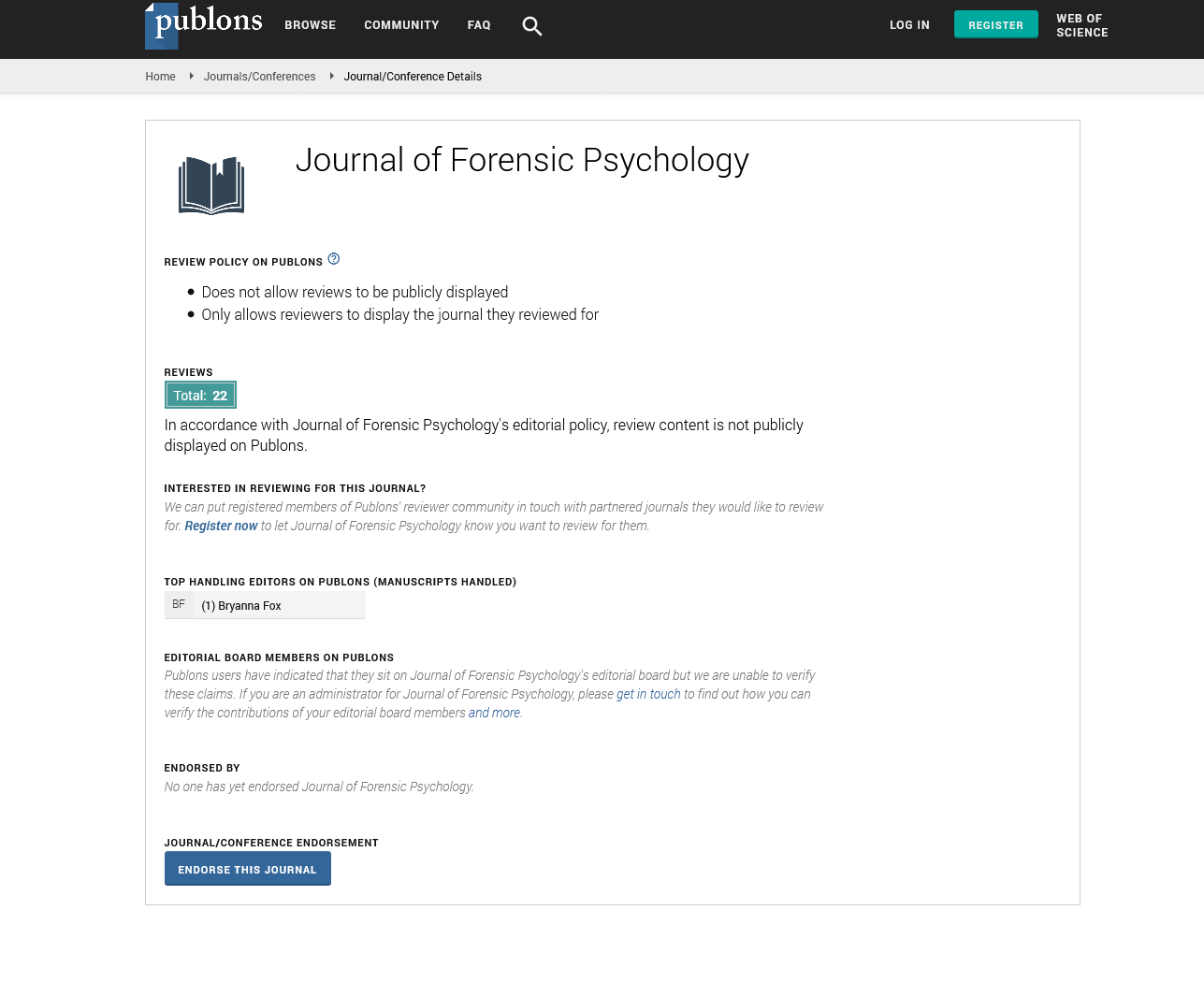Indexed In
- RefSeek
- Hamdard University
- EBSCO A-Z
- Publons
- Geneva Foundation for Medical Education and Research
- Euro Pub
- Google Scholar
Useful Links
Share This Page
Journal Flyer

Open Access Journals
- Agri and Aquaculture
- Biochemistry
- Bioinformatics & Systems Biology
- Business & Management
- Chemistry
- Clinical Sciences
- Engineering
- Food & Nutrition
- General Science
- Genetics & Molecular Biology
- Immunology & Microbiology
- Medical Sciences
- Neuroscience & Psychology
- Nursing & Health Care
- Pharmaceutical Sciences
Opinion Article - (2022) Volume 7, Issue 12
Specific Therapies for Children with Pediatric Social Phobia and Selective Mutism
Sandra Walker*Received: 25-Nov-2022, Manuscript No. JFPY-22-19407; Editor assigned: 02-Dec-2022, Pre QC No. JFPY-22-19407 (PQ); Reviewed: 16-Dec-2022, QC No. JFPY-22-19407; Revised: 23-Dec-2022, Manuscript No. JFPY-22-19407 (R); Published: 30-Dec-2022, DOI: DOI: 10.35248/2475-319X.22.7.262
Description
The Diagnostic and Statistical Manual of Mental Health Disorders, Fifth Edition (DSM-5) describes selective mutism as "an anxiety illness, given that a great proportion of children with selective mutism are nervous."
Selective mutism is a condition where a person is unable to speak out loud in circumstances where conversational speaking is expected. In these people, communicative language is typically still present, though language and communication impairments can also coexist with selective mutism.
Selective mutism can occur alone or in conjunction with other anxiety disorders such separation anxiety disorder, social anxiety disorder (formerly known as social phobia), agoraphobia, panic disorder, shyness, and anxiety.
By age 5, selective mutism typically manifests itself; however, diagnosis is sometimes delayed until the child enters school. Adolescents and adults can nevertheless occasionally struggle with their incapacity to speak in front of an audience. The child's failure to be aggressive and speak up when asked by teachers makes this disability particularly crippling at school. When a person's job requires them to give speeches or lectures in front of an audience, functional impairment occurs in adults. The youngster with selective mutism will frequently choose a friend or relative to act as a translator of communication and whisper into that person's ear so that conversation takes place with the chosen person acting as middleman.
Social phobia, also known as social anxiety, is characterized by a marked and persistent fear of social or performance situations in which embarrassment may happen. Selective mutism frequently coexists with social phobia, and exposure to the social or performance situation almost always results in an anxiety reaction, such as a situationally bound or situationally predisposed panic attack.
Selective mutism may potentially be a prelude to panic disorder, agoraphobia, or both. Agoraphobia is a particular phobia in which a person has a dread of crowded areas. Agophobia sufferers frequently end up housebound. Particularly when invasive medical testing is performed, panic disorder can cause severe impairment and iatrogenically created sickness due to the severity of symptoms like palpitations and chest pain, which can be made worse by medical testing.
People can perceive their anxieties as being excessive and unfounded; therefore the anxiety reaction is not caused by psychosis. However, due to difficulties regulating their emotions, children may have a harder time properly understanding that the reaction is out of proportion to the precipitant, which could affect their cognitive-developmental level of functioning. Recent research has examined physiological indicators of the degree of anxiety. In a 35-child study, children with selective mutism were contrasted with kids who had social anxiety (average age, 8 y). Respiratory sinus arrhythmia and skin conductance levels both showed chronically higher levels of arousal in people with social anxiety and selective mutism. This may assist to explain why children with selective mutism may not appear to be very worried to others; their quiet may help to lessen visible indicators of tension.
Children with selective mutism and social anxiety have chronically higher levels of arousal (more intense anxiety), as evidenced by the presence of respiratory sinus arrhythmia and skin conductance levels, compared to children with social phobia alone, according to studies that use physiological measures to objectively measure the severity of anxiety. Due to their quiet and the fact that others cannot see their concern, children with selective mutism may seem to be less stressed than they actually are.
Selective mutism drastically lowers a person's level of functioning since it prevents them from completing necessary familial, social, and educational activities. It can also cause them so much mental discomfort that they stop going to school.
A disease called selective mutism can start in childhood and last into adolescence and adulthood. Functional impairment arises in people with this disease when one's line of work requires public speaking or lecturing. Since the person may appear to be relaxed when employing nonverbal (i.e., gestural, signing) communication modes, severe social anxiety may not be obvious.
In teenagers with social anxiety disorder, shyness may or may not last. Nearly 50% of a group of adolescents in a study by Burstein et al. reported being shy; however, only 12% of those adolescents actually met criteria for lifetime incidence of social anxiety disorder as determined by the World Health Organization Composite International Diagnostic Interview 3.0, and 5.2% of adolescents who did not report being shy had social phobia.
Regardless of shyness, there is a strong comorbidity between social phobia and anxiety disorders, severe depressive illness, and substance use disorders. Compared to the group without shyness, adolescents with shyness were more likely to report agoraphobia. Teenagers with social phobia experienced greater impairment in the areas of school/work, family connections, and social life than teenagers with shyness, but they were no more likely to seek professional help. The rates of prescription medication use were consistently low across groups: 2.3% of teenagers with social phobia and 0.9% of adolescents with shyness took paxil. Eighty percent of adolescents with social phobia failed to seek or acquire professional therapy for their anxiety.
The prevalence of social anxiety was not significantly influenced by adolescent gender. A clinically referred sample of 408 parentyouth dyads of African American adolescents compared to Latino and white adolescents using the Screen for Child Anxiety Related Emotional Disorders (SCARED) revealed that parents had a tendency to significantly underreport anxiety symptoms.
Citation: Walker S (2022) Specific Therapies for Children with Pediatric Social Phobia and Selective Mutism. J Foren Psy. 7:262.
Copyright: © 2022 Walker S. This is an open-access article distributed under the terms of the Creative Commons Attribution License, which permits unrestricted use, distribution, and reproduction in any medium, provided the original author and source are credited.

